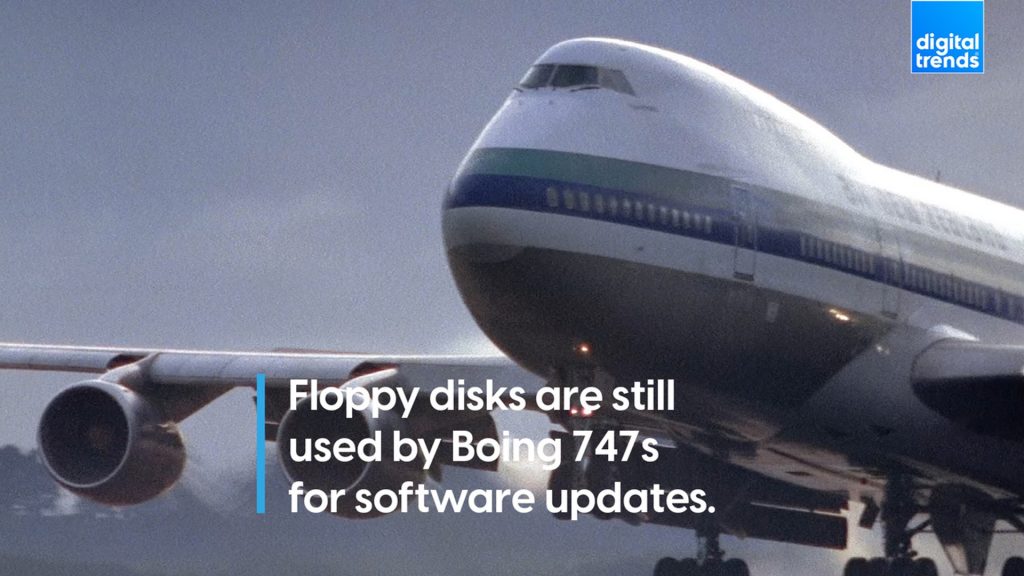The Boeing 747 has been one of the most successful airplanes in the world. It accommodates three segregated class cabins inside. It has been a magnificent aircraft for long-distance commercial flights from the late 1980s until even today, however, except the floppy disks, an old piece of technology.
The information was unveiled by UK-based ethical hacking and penetration testing company Pen Test Partners. First played at this year’s virtual DEF CON hacker conference, their video was roughly 10 minutes long and gave everyone attending a rare tour of the plane’s avionics bay and cockpit — where Pen Test Partners extracted a 3.5-inch floppy disk drive.
The Pen Test Partners, in their walkthrough of the now-scrapped Boeing 747-400, unveiled that the capacity of a floppy disk is 1.44MB only. When not in use, the floppy drive and the diskette storage bay are hidden away behind a locked panel and are only taken out when the monthly database upgrade is required.
Floppy disks are used in the aircraft’s all-important navigation database and software updates, which are maintained and upgraded once every 28 days by an airline-appointed engineer. The entire loading mechanism of the navigation database on the 747 aircraft model is old-fashioned yet at its best in today’s terms. The conventional disks carry essential information about runways, flight paths, airports, and waypoints.
The Boeing 747-400 was first announced back in 1984 and entered operations for the first time in 1989. It has, therefore, remained in flight operations for over three decades now; lately, an announcement has been made to put this model to retirement from the air operations. Leading airlines that still use the aircraft go through the entire technological hassle of updating the navigation databases with floppy disks, including British Airways, Lufthansa, KLM Royal Dutch, Qantas, and China Airlines.
With the last of the Boeing 747-400 aircraft set to remain flying until around 2025, it seems that the simple 3.5-inch floppy disks will undoubtedly remain in function until another half a decade. This is a real example of technology disappearing from the public consumer sphere but remains around in corner enterprise applications for more extended periods.
It sounds like a slow process when we think that while some system updates only need one floppy disk of updates, others might need up to eight floppy disks per update. This concern is hovering since 2014 as to why hasn’t anyone upgraded the aviation industry up to speed with the 21st century. Even in 2020, we can see a “notable number of airlines are still using floppy disks for software parts loading.”

